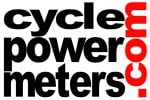Are you wondering about getting a cycling power meter but aren’t sure where to start?
Want to know what a cycling power meter is, how it works and whether it’s worth getting one?
In this article we pick the brains of Bob Tobin of cyclepowermeters.com, the UK’s leading expert on power meters for cyclists.
Bob has been using bike power meters since 1999 and set up cyclepowermeters.com in 2007. What he doesn’t know about power meters isn’t worth knowing.
Here he answers the questions you want answers to before you buy a power meter for your bike.
1. What is a cycling power meter?
A cycling power meter is a device that tells you the power output of the rider.
You can use it to see your leg power i.e. how hard you are pushing on the pedals.
It allows you to understand the physical intensity of a ride, analyse your effort and then compare it with another ride.
(A) What does a bicycle power meter measure?
It may seem odd, but a power meter doesn’t measure power directly.
What it measures is force x velocity and that gives the power figure.
Force is measured using strain gauges.
The speed of movement is captured by a magnet and reed switches, accelerometers or gyroscopes.
(B) Do road bike power meters measure cadence?
Most power meters for bikes on the market now work on the basis of: Power = Cadence x Force
In other words, the rotational rate used to calculate power will generally be cadence. The only exception to this is the PowerTap hub which measures the speed of rotation of the hub.
So, unless you have a PowerTap hub, your power meter will almost always measure cadence and send it to your head unit (Garmin, Wahoo etc). The head unit will choose this data in preference to any other cadence sensors you may have attached to it.

2. Why use a cycle power meter?
(a) What are the benefits of cycling with a power meter?
Fitness testing
With a power meter you can test your fitness whenever you like, for whatever duration you like.
Gauge your strengths and weaknesses
Having tested your fitness, you can objectively determine your personal strengths and weaknesses. In this way, you can train to improve your weaknesses and race to your strengths.
A common reference point is to determine your “threshold power” or “FTP” (Functional Threshold Power), which represents the highest power output you can sustain for 60 minutes.
Good threshold power relative to your weight? You are likely to be good at long climbs and sportives.
Poor sprinter but good threshold power? You are likely to be good at time trialling or triathlons. If you are road racing, you may want to think about breaking away some distance from the finish.
Are you a road racer with an average sprint but good fatigue resistance? That means you need to soften up your break away companions with a series of attacks before the finish.
Consistent power measurement and motivation
Power is an objective measure that is directly linked to your cycling performance. If your power goes up and your weight and aerodynamics don’t change then you will go faster. The wind and hills will affect speed and many things affect heart rate, but power is comparable across time and between people.
Seeing your power data going up is incredibly motivating to keep on training. It can help you look ahead to your goal event knowing for sure that you are fitter than you ever were before.
Determine if your training (plan) is working
As power is a consistent measure you can use it to track whether your training is having the desired effect. If you spend several months working on increasing your threshold power and you are not seeing tangible improvement, then you may need to rethink your training. If a week of a certain type of training yields a sudden major improvement, then you can think about revisiting those sessions since your body has responded well to that stimulus.
A power meter is an unforgiving mistress. It will show objectively when your power is improved, and conversely it will also show you when your form has disappeared.
When the level of effort you experience (your “perceived effort”) feels higher than usual at powers that would normally be comfortable, you need to be very vigilant to what your body is telling you. It could be you are overly fatigued or coming down with an illness. This is a warning sign that you need to have a few days rest to see how your body recovers.
Training load
With power meter data you can determine your optimum training load. You can use advanced metrics and algorithms like TSS® and Performance Manager® from TrainingPeaks®. With these you can plan your training to give you a consistent overload.
Push your body hard enough to get better but not so hard that you risk illness.
You may well find you are training less than you used to by removing the junk miles and making every session count.
Peaking and tapering
Not only can you plan your training load; you can also plan to be at your best for your target event at the right time.
How long should you taper, if at, all for your goal race?
For a short race like a track kilometre or hill climb you might taper for a few weeks so you are very fresh. For a longer race you might have as little as a few easy days in the week before the race.
Training at the correct intensities
Bicycle power meters give you instant feedback. This means you can use it to keep yourself at the right intensity for the duration of the effort you are doing. Whether that is a 5-minute interval at 110% of threshold or a 40 minute sweet spot (88%-93% of threshold) ride, if you back off for even a second the power numbers will drop. You can train specifically for the demands of your goal event.
Before cycling power meters became widely used, cyclists often used heart rate measurement more extensively to gauge their efforts. However, heart rate is affected by numerous factors other than the intensity you are riding (temperature, stimulants like caffeine, hydration, time of day, fatigue etc.) and it lags behind the effort you are doing.
Once you have determined your threshold power you can determine your training levels.
Equipment and position optimisation
You can use your cycling power meter to optimise your equipment in terms of aerodynamics and rolling resistance.
Using techniques like the ‘Chung Method’ or repeated rides up and down a section of quiet road, you can analyse ride data to determine the aerodynamic effects of changes of equipment or position. While it is not as accurate as a wind tunnel it can enable you to make significant aero gains: more speed for your effort!
Nutrition
You can use your power meter data to determine exactly how many calories you burned during your ride. This information can guide your nutrition strategy before, during and after events and training.
If you are aiming to lose weight (perhaps while simultaneously improving your performance), you can accurately monitor your calorie deficit, so you lose weight slowly and consistently.
Pacing
In triathlons, sportives, time trials and mountain bike races it is crucial to pace yourself accurately from the start.
There is no bunch in which to recover from major exertions.
The power meter is a huge advantage throughout these types of events where you can set yourself a limit on your power output so you can maintain the pace for the duration.
Race analysis
You can use the power data from race files to:
Coaching interaction
A power meter for your bike enables you to get the best from your coach.
Sending your power meter data to your coach tells them not only how you completed the session that they planned for you to do, but also how your body responded to it.
Longer term, they can see if the training plan they are giving you is working or not and adjust it as necessary.
It also allows you to see if the money you are paying your coach is worthwhile. If you can see you are getting fitter or your endurance is improving, then you can be happy they are earning the money you are paying them for their expertise.

(b) Does a road bike power meter add bulk and weight to my bike?
Power meters add very little weight to the bike. The lightest sensor is 4iiii which adds about 15g.
The lightest power meter is hard to determine as it depends on what you are replacing on your bike. For instance, a Quarq DFour paired with SRAM RED D1 crank arms is lighter than the Shimano Dura-Ace 9100 crankset it is designed to replace.
(c) Are power meters complicated to use?
Power meters do add some complexity to your bike.
You need to re-zero them before you ride. This has incorrectly become known as ‘calibrating’ them as that is what the button on Garmins are called.
Re-zeroing is just a case of spinning your cranks/pedals/wheel to switch it on, make sure your feet are unclipped from the pedals (some brands require the cranks orientated vertically) and then press the calibrate or offset button on your head unit. You should do this before every ride.
You will need to either charge or change the batteries as required.
In order to fully exploit the power meter as the tool it is, you will need to change the way you train, download the data and look at it to determine whether you did what you set out to do and are you improving.
There may be some learning required, software to use and potentially books to read like ‘Training and Racing with a Power Meter’ or ‘The Power Meter Handbook’. You could employ a coach to help you use the data to make you faster.
You will need to invest some time and add some complexity to make yourself faster and fitter. It isn’t a product that can immediately make you faster, like a disc wheel or aerodynamic helmet.
Want to buy a power meter?
A power meter is an expensive piece of kit, so before you hit the buy button, speak to someone that knows what they’re talking about.
Bob Tobin of cyclepowermeters.com is the voice behind this article and an industry expert on cycling power meters.
To find out more and get in touch with Bob, check out their website.
3. How do the best cycling power meters work?
(A) What are the different types of power meters?
It can be difficult working your way through the minefield of different power meter types. Do you want a crank-based power meter, a spider-based power meter, a single-sided power meter, a hub-based power meter?! Below we list the main power meter options, with examples and their pros and cons.
Pedal power meters
Examples of pedal based power meters – Favero (BePro and Assioma), Garmin (Vector and Rally), PowerTap (P1 and P2), SRM/LOOK
Pros
Cons

Spider power meters
Examples of spider-based power meters – SRM, Quarq DZero, Power2max, FSA Powerbox, Rotor
Pros
Cons
Crank arm power meters (left only)
Examples of left crank-based power meters – 4iiii, Stages, Pioneer
Pros
One of the cheaper options, usually easy to fit, 4iiii allow you to adjust the calibration factor to try to allow for a known L/R balance.
Cons
Crank arm power meters (left and right)
Examples of left and right crank-based power meters – 4iiii, Stages, Rotor (2inPower), Pioneer, Verve, Shimano
Pros
Cons
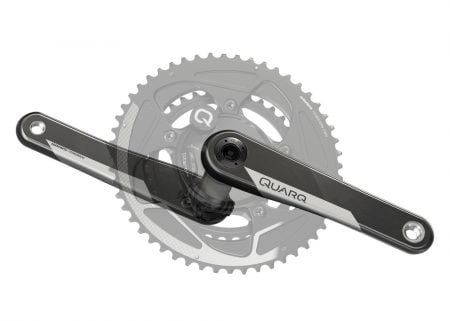
Bottom bracket power meters (axle based)
Examples – Rotor (INPower, 2INPower), Quarq (Rival)
Pros
Cons
Hub power meters
Example – PowerTap (G3)
Pros
Cons
(B) What are the different measuring styles?
Left only versus dual sided power meters or total power
To save cost a number of systems are available in left only (or right only too in the case of Stages). Examples would be Stages L, 4iiii L, Assioma Uno, Vector 3S.
These systems are measuring the power your left leg is producing and doubling the data. Some systems have a ‘scaling factor’ setting to allow you to alter this so you can more than double it or less than if you have a known L/R imbalance. Ultimately this compromises the power data. Human beings are not symmetrical and most people have a left/right imbalance.
If this left/right imbalance is consistent then a single-sided power meter will work well for you. If your left/right imbalance is inconsistent over time (say you are recovering from a leg break or leg ligament tear etc) or over the power spectrum (some people have a lazy leg at low powers and conversely some people have a dominant leg when sprinting). If you are 48%/52% at low powers but 52%/48% at high powers that 4% shift is doubled by the power meter and will become an 8% shift in the data which could push you into the wrong power zone. Therefore, it is recommended to use a total power or Left and Right power system.
People who are not sure on their left/right balance or who are recovering from injury are advised to do a ramp test. This would involve riding something like a Wattbike or somebody else’s Left/Right power meter and starting at low power 50-100w and increasing 20W per minute until it is very hard (caution if you are not in regular training seek medical advice before doing a maximal ramp test effort). The data from this will show you what your left/right balance is over the power spectrum and will help in deciding if a left-only system is suitable for you.
Total power systems
This would be a single device which is measuring all your power, but which is not independently measuring your left and right legs. Examples would be SRM, Quarq, Power2max, Rotor INSpider and PowerTap hubs. As these are measuring all your power you don’t need to worry about your left/right balance.
Independent left/right power systems
This would be a system with either separate left and right measurement which talk to each other (examples would be Garmin Vector/Rally, PowerTap P2, Assioma Duo, Stages LR, 4iiii LR, Verve Infocrank) or a single device which measures both sides (examples would be Rotor 2INPower, Shimano 9100-P).
There are good and bad sides to having two independent devices. The good side is the extra data you can get. Not just the independent left and right data but also torque effectiveness and pedal smoothness and advanced metrics like power phase, seated versus standing time and platform centre offset. The downside is that both devices need to talk to each other all the time to work properly. Usually one side is a master which talks to your head unit and one slave which just talks to the master. If the battery in the slave fails you still get data and the master will typically double its data. If the master battery fails you get no data at all. If the master or slave develops a fault you could get half the data, no data at all or massively high data. So twice the data means more than twice the chance you could have problems.
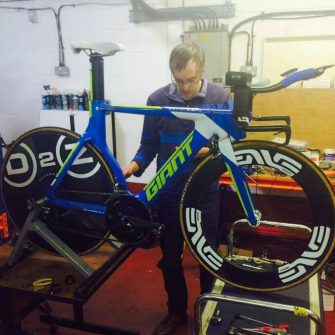
(C) How to read a power meter?
To see the data while riding, when you set up the power meter, you pair it with a compatible head unit/bike computer (Garmin, Wahoo etc). Your power meter will send the data to your head unit/bike computer so you can see your power output as you’re riding.
4. How accurate are bike power meters?
Power meters are typically rated by the manufacturers as having an accuracy rate between +/- 0.5% to +/-2%. So, from one day to the next 300w might be 294 to 306.
The elements you want from a power meter are accuracy, repeatability and appropriate resolution.
Think of a dartboard:
Resolution refers to how well the system can detect small differences in measurement. If you think of measuring all people with a metre rule, most people would be either 0m (babies and small children), 1m or 2m. The resolution is poor and the data has little meaning.
An example in power measurement is doing roller testing of rolling resistance of tyres. If you use a PowerTap wheel (which has lower resolution than other power meters), the potential error would mean you couldn’t say for sure a 28 Watt tyre was definitely better than a 29 Watt tyre.
Want to buy a power meter?
A power meter is an expensive piece of kit, so before you hit the buy button, speak to someone that knows what they’re talking about.
Bob Tobin of cyclepowermeters.com is the voice behind this article and an industry expert on cycling power meters.
To find out more and get in touch with Bob, check out their website.
5. What are the best power meters for cycling?
(A) What are the best brands?
The best brand depends on your definition of best. Best could be lowest cost, most accurate measurements, most flexible, least maintenance, most reliable or fits to the most bikes.
Look out for our next article coming soon on this very topic!
(B) What features should every good power meter have?
Top features to look for include wireless dual broadcast ANT+ and BLE, total power or independent left/right, ability to check and change calibration, active temperature compensation.
(C) What battery life can you expect on a power meter?
Expect to never achieve the manufacturer quoted hours of battery life. This is likely to be in optimum conditions, and temperature in particular can affect battery voltage and therefore lifetime. Most systems will give 40 to 60 hours between battery change or recharge (as you can get some rechargeable battery options).
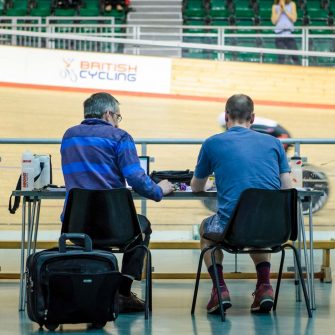
6. How much does a cycling power meter cost?
Power meters cost anywhere from the cheapest cycling power meters at £299 up to £2,495.
The vast majority are in the £400-£800 price range.
(A) Why are the best power meters so expensive?
Power meters are expensive because of the amount of research, design and engineering that goes into making them.
A number of companies (particularly kickstarter ones) have underestimated how hard it is and how much it costs to get from a working prototype product to a mass produced one.
You have to make a mass-produced product which combines light weight with accurate consistent repeatable data, transmitting that wirelessly, probably with user replaceable batteries and make it water and shock proof.
As they are wireless devices you also need a licence to sell a radio device from regulatory bodies. This requires testing to make sure the device does not affect other equipment. Typical investment runs into millions of $/£/€ and 3-5 years of development.
(B) Are power meters worth the money for an amateur or recreational cyclist?
The answer to this will depend on how seriously you take your cycling and whether you’re looking to improve your performance.
They’re a complicated piece of technology that cost a lot for companies to develop and cyclists to buy, but if you’re willing to put in the time to use the data to improve your training they can really yield results. There’s a reason why they’re now standard kit for pro cyclists!
If you’re concerned about buying one, you can always rent before you buy. More information on this below.
7. Compatibility issues: are all power meters compatible with…
…Garmin/Wahoo bike computers
Pretty much every power meter on the market today transmits ANT+ and BLE (Bluetooth Smart) apart from SRM which still transmits only via ANT+. This means that every power meter is a effectively a bluetooth power meter (except SRM).
Does that mean you can use any head unit with any device? In theory yes, in practise BLE is a less well-established standard and not all BLE-enabled head units will talk to all BLE enabled sensors.
Polar especially seems to have problems with some sensors. SRM can be a problem for some head units as it transmits cadence, torque and the calibration factor and the head unit is supposed to calculate power from that data but not all will.
If you can, use ANT+ as your transmission protocol.
…Strava
Once you have the data on your head unit you will be able to send it to any analysis software or app like Strava, Golden Cheetah, TrainingPeaks, WKO4 or WKO5, Todays Plan, TrainerRoad etc.
…Zwift/indoor trainers
Any of the available power meters can be used with online training platforms like Zwift, Rouvy, The Sufferfest, Road Grand tours, TrainerRoad.
If you are using an iPad, Apple TV or iPhone you may require an ANT+ to BLE converter like an NPE CABLE as Apple devices do not pick up ANT+ signals.
…Any cleats
At the moment you have pedal power meters with LOOK Keo style cleats from a few manufacturers as well as Garmin Rally in SPD-SL and SPD.
…All cranksets and groupsets
Pedals can be used with any groupset (Shimano, SRAM, Rotor, Campagnolo), any drivetrain 1X, 2X or 3X, and any number of sprockets 1-13. Only Garmin Rally XC100/XC200 is designed to be used for cross/gravel/MTB.
4iiii only make Shimano compatible products in the current product iteration so 11 speed or 12 speed GRX. They also make OEM products for Specialized and Praxis Works.
Rotor can be used with Shimano, SRAM or Campagnolo products. They have chainrings available for 1X and 2X on the road/gravel or cyclocross and 1X on MTB. 10,11,12 or 13 speed. The INPower and 2INPower products have 30mm axles so will not fit TREK BB90 bottom brackets. Their INSpider product is one of the most flexible products in from any make, capable or being used on road 1X or 2X or MTB 1X, 30 or 24mm axle, in crank lengths from 150 to 175mm.
Stages make products for Shimano (Road, Gravel, MTB, Track and BMX), SRAM (BB30, GXP and DUB), FSA, Cannondale and Campagnolo.
PowerTap Hubs are now discontinued but were available in Campagnolo, SRAM XD driver and Shimano/SRAM freehubs. Rim and Disc braked versions. So they would work with any road groupset except SRAM AXS 12 speed. For MTB they won’t work with Boost 148×12 drivetrains and only come with 160mm disc rotors.
SRM cranks are available for road, track, MTB and BMX. For road in Campagnolo then in Rotor and SRM Origin versions for Shimano and SRAM 9,10 or 11 speed compatibility. For BMX they come in Shimano DXR. For MTB 1X only in SRM, Shimano XTR and SRAM XX1 for 11 and 12 speed. For the track they own their own branded cranks: Science and Origin.
Quarq are available for road, MTB, gravel and cross. On the road/gravel the DZero DUB versions are designed for 9/10/11 speed bikes and use 5 bolt chainrings. The AXS versions are designed to work with their AXS groupsets RED, FORCE and RIVAL. The DFour version is designed to work with Shimano 9100 but also fits 8000 and 7000. For MTB their XX1 Eagle version is 1X only designed to work with their AXS 12 speed groupset in standard or Boost 148 drivetrain.
Power2max make spiders or cranksets for road, MTB, gravel/cross and track. With products to fit Shimano (spider for MTB only), SRAM (older 3 bolt cranks/spiders), Campagnolo, Rotor (older 3D24 and current ALDHU/VEGAST), Specialized, Cannondale, Easton, Praxis Works and FSA. One way or another there should be a product to cover any 1X or 2X groupset.
Want to buy a power meter?
A power meter is an expensive piece of kit, so before you hit the buy button, speak to someone that knows what they’re talking about.
Bob Tobin of cyclepowermeters.com is the voice behind this article and an industry expert on cycling power meters.
To find out more and get in touch with Bob, check out their website.
8. Can power meters be swapped between multiple bikes?
All power meters can be moved between bikes if the part the power meter fits to is compatible on both bikes.
(A) Pedal based power meters
All pedal power meters will fit all bikes as the screw thread is the same on all adult bikes. This is part of the attraction of the pedal products. It doesn’t matter what your next bike is, you know it is going to fit. Most pedal-based systems are for road bikes so while it might fit your downhill bike it might not survive the hits a downhill bike might take.
(B) Spider based power meters
Quarq, SRM and Power2max spider-based systems are available to fit lots of types of bikes – but it would need to match the gearing systems and bottom bracket on the bike.
Bottom brackets can be an issue as bracket standards differ and some can be adapted to take other fittings – BB86 to BB30 for instance can be adapted in all instances as the shell width is the same. Whereas BSA cannot always be converted to BB30. BB90 can only be switched between Shimano 24mm and SRAM GXP.
(C) Some examples
An 11-speed specific Quarq won’t work with SRAM AXS 12 speed.
A BB30 SRM or Quarq in BB30 or DUB will not fit to a TREK with a BB90 bottom bracket as it is physically impossible to get a bearing to fit between the frame and the axle.
Swapping from a road bike with compact (50/34) gearing to a TT bike where you want larger gears will mean a chainring swap as well as moving the power meter.
Crank arm based: 4iiii and Stages. You will need to have the same crank fitting on both bikes (Shimano road, for instance) but also the same crank length. Your road bike might have 170mm but your TT bike 165 which would make swapping difficult. If one bike was Shimano and the other SRAM GXP you could not move the arm as it physically won’t fit.
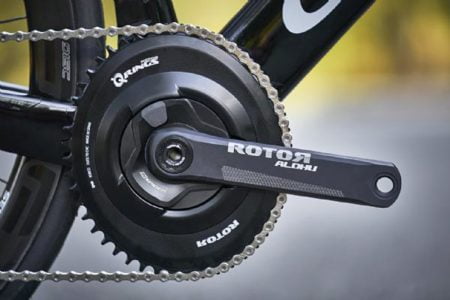
9. How to use a power meter’s data for cycling?
(A) Software to analyse your data
For your PC or Mac you can get Golden Cheetah for free (yes, free!) and TrainingPeaks WKO5.
For online analysis you have TrainingPeaks, Strava, Todays Plan, Garmin Connect and a host of others.
(B) Coach interaction
One thing power meters really help with is coach interaction. The coach can give you very specific instruction in terms of the intensity they want you to ride at and the power meter will give you instantaneous feedback as to whether you are doing the intended power. The coach can see if you are carrying out the workouts in the way they were intended.
Both the client and the coach can see if the training plan is working, if the numbers are going up for the intended duration. If they aren’t the coach can adjust the plan.
(C) How to train with a power meter (for cycling)?
How to use a power meter for training is a massive subject.
There are at least two excellent books on the topic of cycle training with power: The Power Meter Handbook’ by Joe Friel and ‘Training and Racing with a Power Meter’ by Andy Coggan (the godfather of training with power) and Hunter Allen.
I would recommend reading both, but start with the ‘The Power Meter Handbook’ as this is easier to digest. Then move onto ‘Training and Racing with a Power Meter’.
You can get downloadable off-the-shelf training plans from a variety of sources like TrainingPeaks, TrainerRoad, Cycling Weekly, GCN and Wattbike.
To a certain extent any plan might be better than no plan, but off-the-shelf plans are not designed around your goals, your strengths and weaknesses and your lifestyle. For that you would need to employ a coach. Don’t underestimate the motivation from your coach setting your own dedicated sessions and reviewing whether and how you completed them!
10. How to pick the best power meter for you?
Here is a high-level overview of factors to consider:
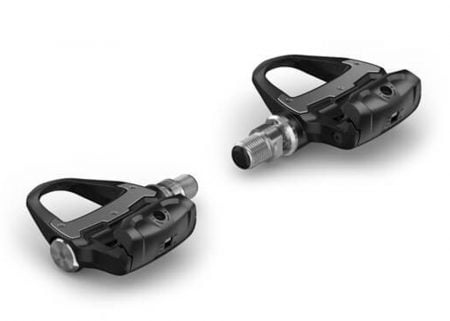
11. Where to buy a power meter?
(A) The options
Where to buy – local bike shop, major online retailer or specialist retailer.
(B) Local bike shop
It’s hard to argue against supporting your LBS. If you don’t buy anything from them then they might not be around in the future to service your bike.
Downsides are likely to be limited choice as they won’t stock every brand. Further, there may be limited stock as Covid has increased demand and reduced supply.
As they have hundreds of products to sell, the sales people may not know that much about them. You might end up buying what they have rather than what is right for your situation.
(C) Major online retailers
If you know what you want, then the major online retailers are more likely to offer a large array of brands and are more likely to have stock as they buy in bulk and it may well be at a discount.
The downside is no pre-sales support to choose the right product and no post-sales support if you have any questions or issues.
Typically questions or support are forwarded to the brands distributor so it can take a while to get answers. It is probably quicker to contact the brand or distributor directly for post-sales support.
(D) Specialist retailers
Specialist retailers are few and far between but have expert knowledge to direct you to the right product for your situation.
Cyclepowermeters.com is an example of a specialist retailer and we are always happy to advise customers by phone or email. Our focus is solely on power meters; we are specialists and have been selling power meters since 2007.
The main way we differ from other retailers is our customer service. If you aren’t sure which product is right for you, what bottom bracket your bike has, if the product you are thinking of will work on the drivetrain on your bikes then you can just pick up the phone or send us an email. You’ll reach an expert and get a prompt, accurate answer to your question.
Note from Epic Road Rides: Having bought power meters from Cycle Power Meters with our own cold, hard cash for the last ten years, we genuinely think they’re the gold standard – we don’t think anyone is more expert!
(E) Servicing your power meter
Some power meters like Stages or 4iiii don’t require any servicing.
Others, like power meter pedals or hubs, require routine maintenance as they have moving parts that will wear out.
Some like PowerTap products need to go to the authorised service centre to carry out that work as they need to be recalibrated with specialist equipment after servicing.
Garmin requires you to buy a replacement pedal body to replace the bearings. This is user-serviceable but is a little tricky if you aren’t a competent mechanic as the threads for some parts are reversed and there are some tiny screws to undo.
Favero pedals are the most user friendly to self-service as the bearings and pedal bodies can be purchased separately and the required tools are ones more people will already have.
If you are unsure about the calibration of your power meter (for example your direct drive trainer data suggests your FTP is 300w and your power meter 250w) you can in some cases check this yourself but you may need to send it to a specialist for testing.
Servicing at cyclepowermeters.com
We are the European service centre for Powertap so we service PowerTap hubs and P1 P1-S and P2 pedals. We can calibrate them and do bearing and diagnostic services. We operate that on behalf of Powertap/SRAM. We service over 1000 sets of pedals a year.
In addition to PowerTap we calibrate Quarq cranks, Garmin Vector and Rally pedals, Favero BePro and Assioma pedals and SRM cranks.
We do bearing replacements on Garmin Vector, Favero BePro and Assioma pedals.

(F) Renting a power meter
We know that buying a power meter is a huge investment. That’s why we offer power meter rental for UK customers. The minimum term is three months and then you can roll the contract on if you like.
You can find out more information here.
12. Conclusion: Is it worth it to add a power meter to your bike?
Will a power meter improve your cycling and make you faster?!
Just buying a power meter won’t improve your cycling performance or make you faster. But it is the first step in a more structured approach that most certainly can. In order to reap the benefits of owning a power meter, you need to commit to using it in the appropriate way to make you faster.
A power meter can help you improve your training, your position, your pacing and testing your equipment to make the fastest choices.
A big thank you to Bob for these expert insights and if you want to speak with him about buying, renting or servicing a power meter, head to www.cyclepowermeters.com.
Be sure to follow us on email and social media so you don’t miss the next two articles in our series: expert insights on the best brands of power meter and the best value power meters.
Got a question for Bob?
Fill out this form and we will send it to Bob. We aim to get you an answer within 24 hours wherever possible!
The contents of this website are provided for general information purposes only. It is not intended to amount to advice and you should not rely on it. You should carry out your own due diligence and risk assessments and take professional advice. Views expressed by interviewees or other users of this website do not necessarily represent our views. We make no representations, warranties or guarantees, whether express or implied, that the content on our website is accurate, complete or up to date. If you use any information or content on this website, download from, or otherwise obtain content or services through our website, it is entirely at your own discretion and risk. Epic Road Rides Ltd disclaims all liability and responsibility arising from any reliance placed on the information and content on this website. Find out more here.
Want to buy a power meter?
A power meter is an expensive piece of kit, so before you hit the buy button, speak to someone that knows what they’re talking about.
Bob Tobin of cyclepowermeters.com is the voice behind this article and an industry expert on cycling power meters.
To find out more and get in touch with Bob, check out their website.

